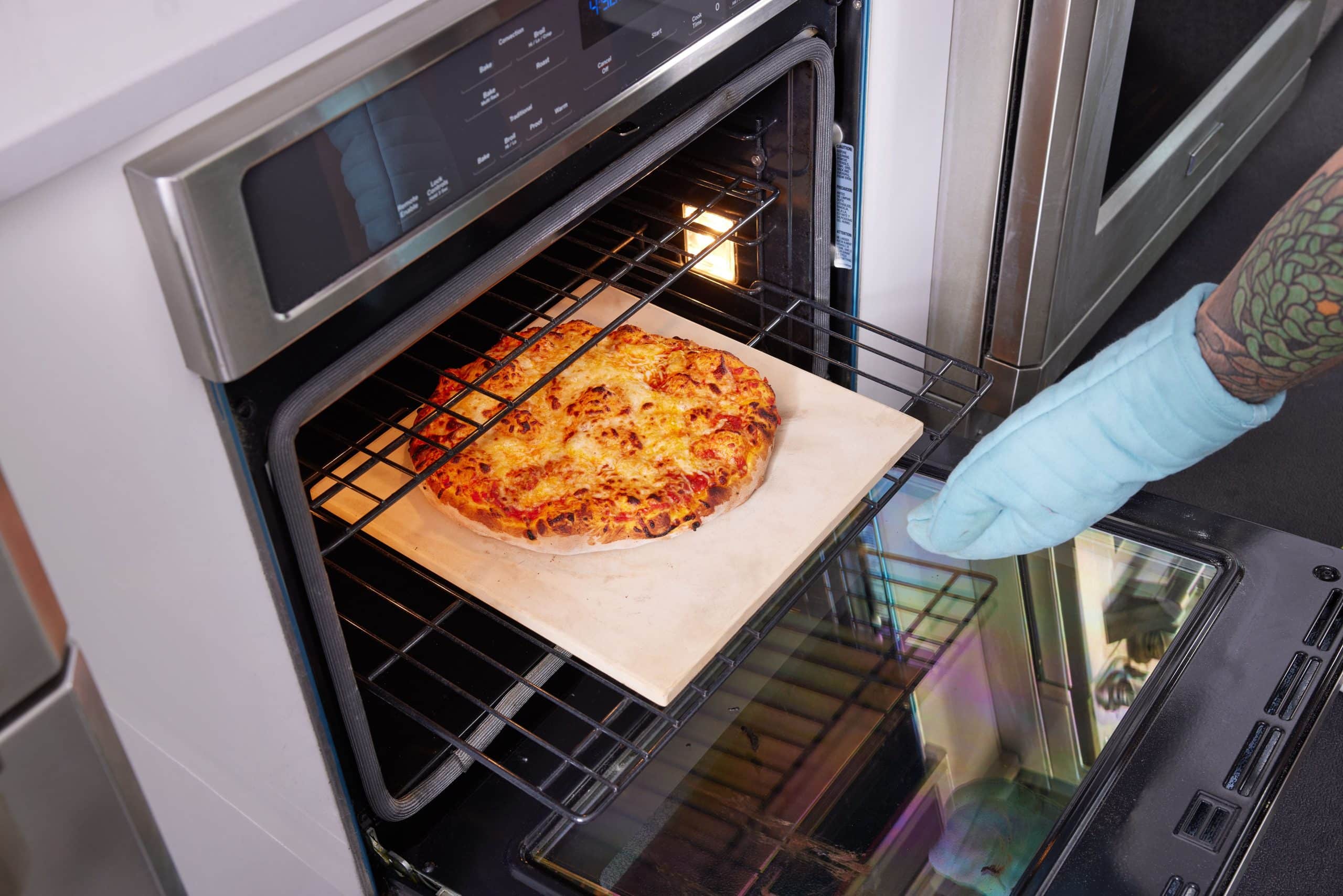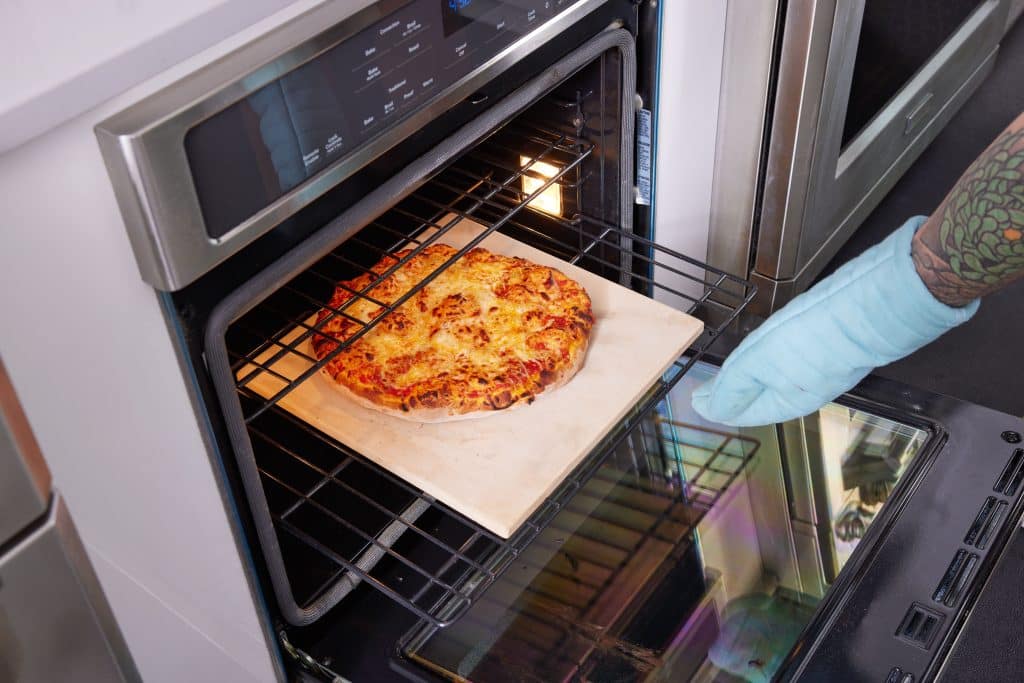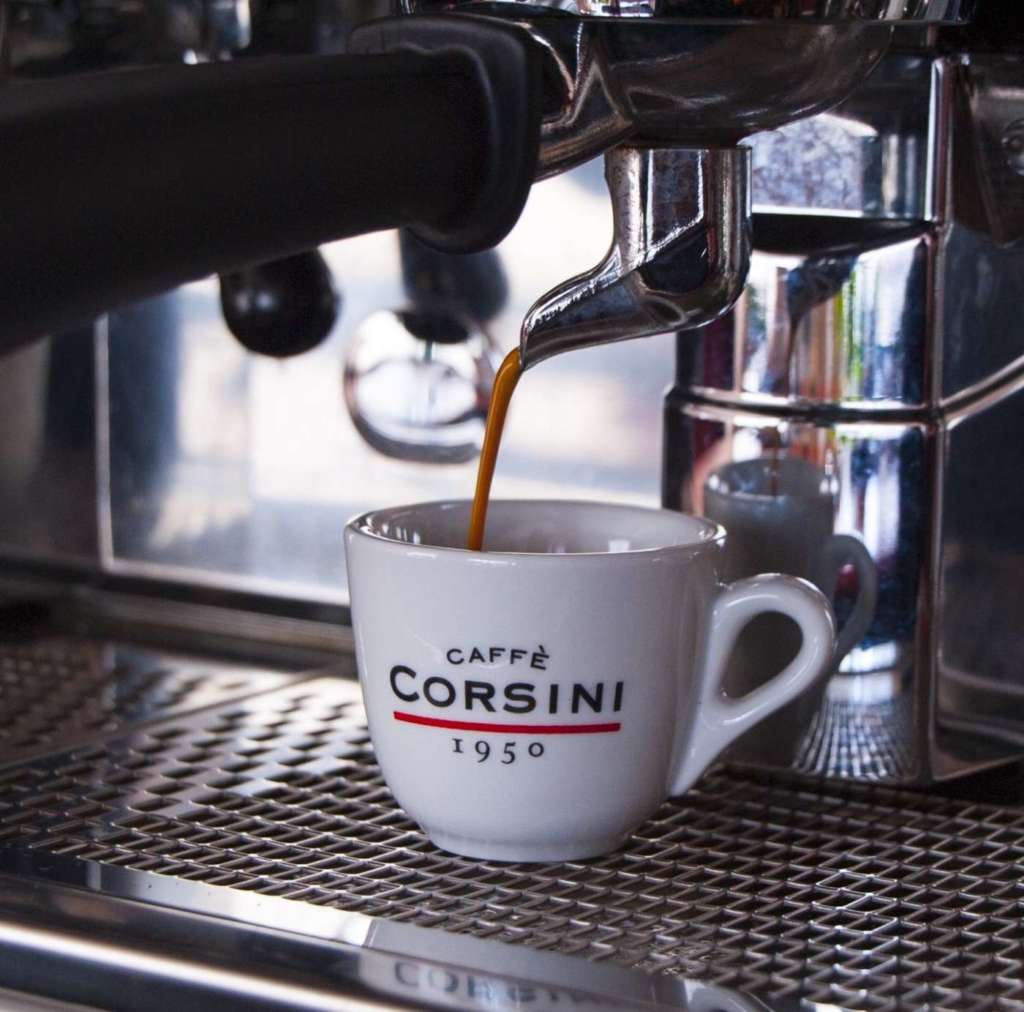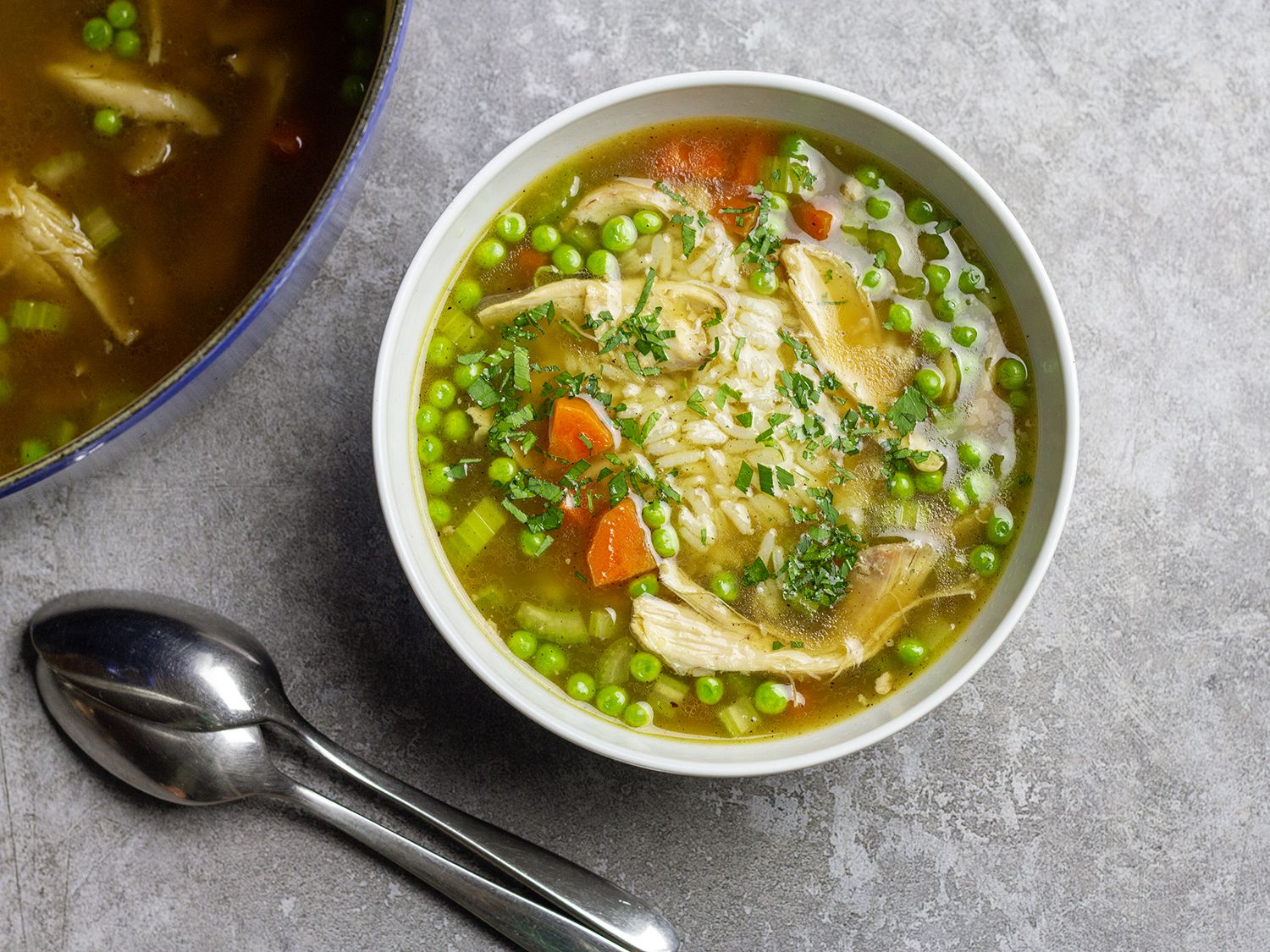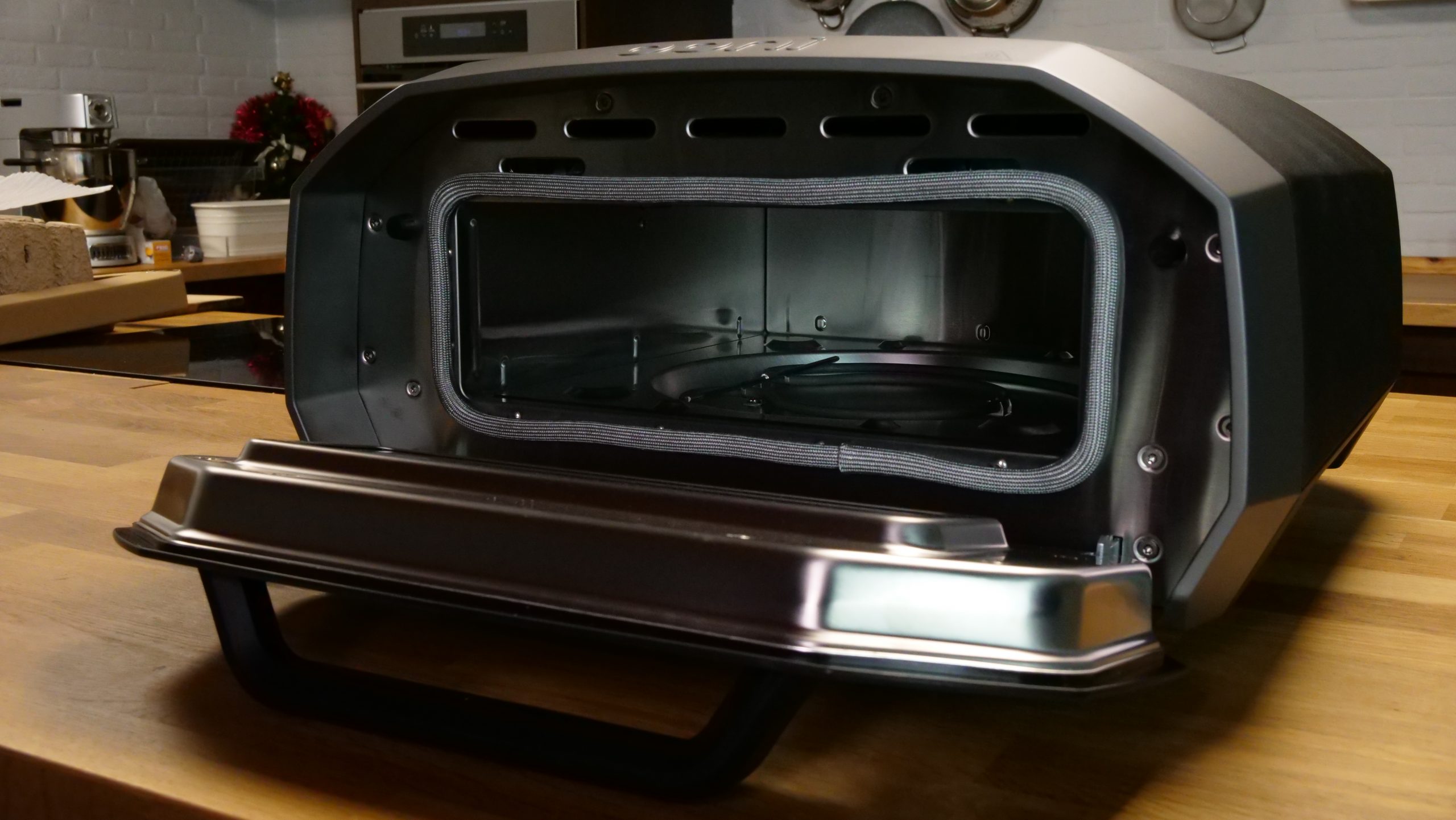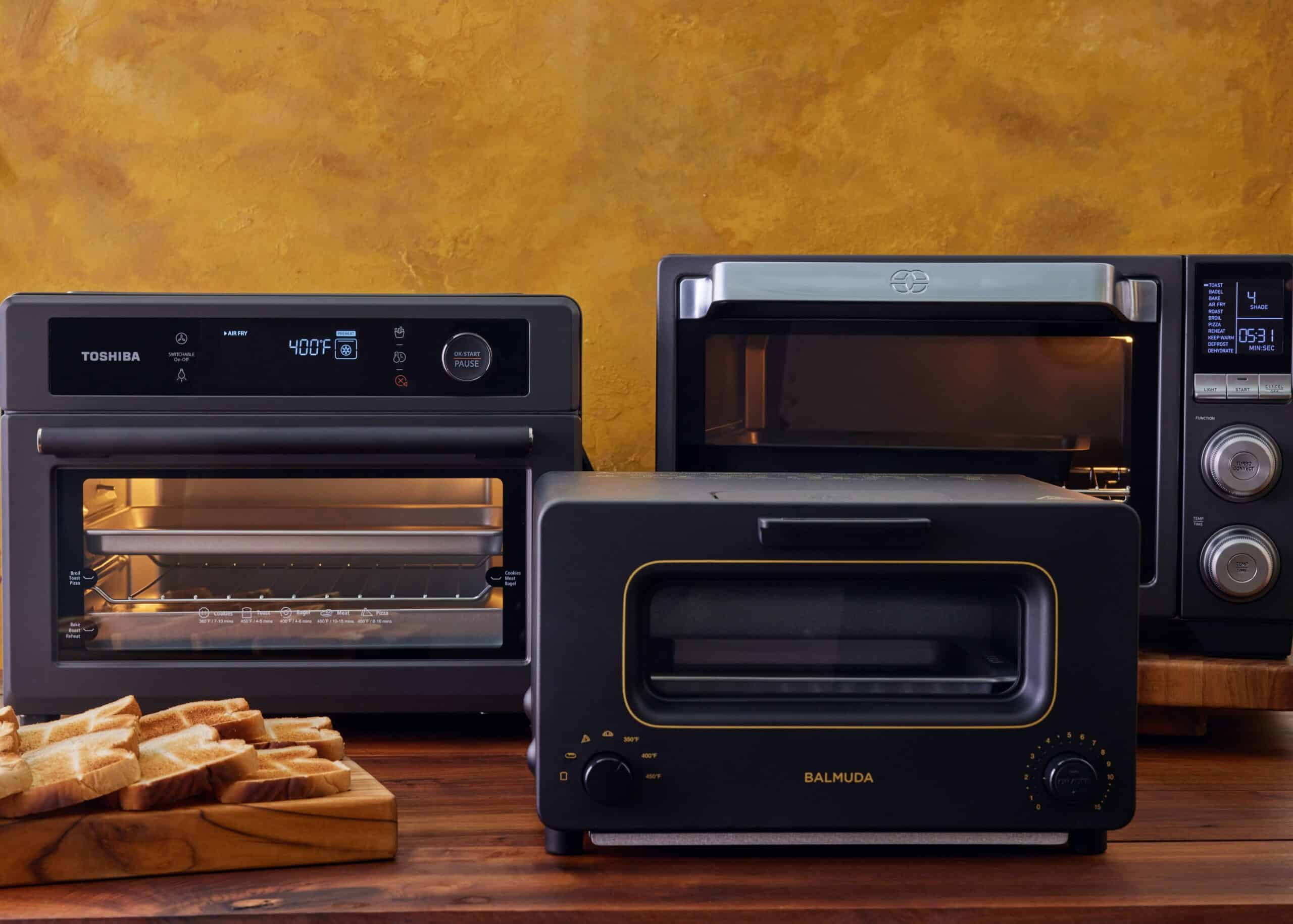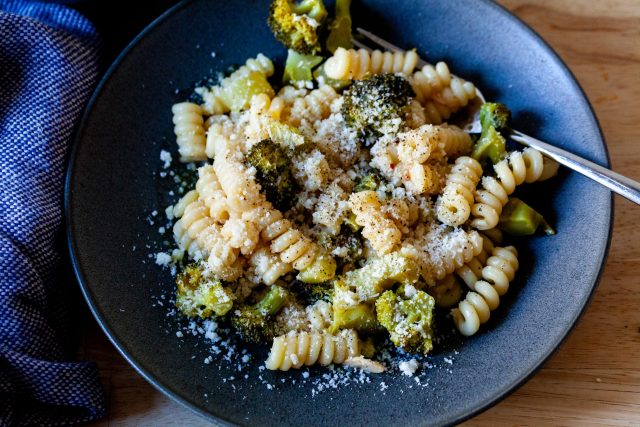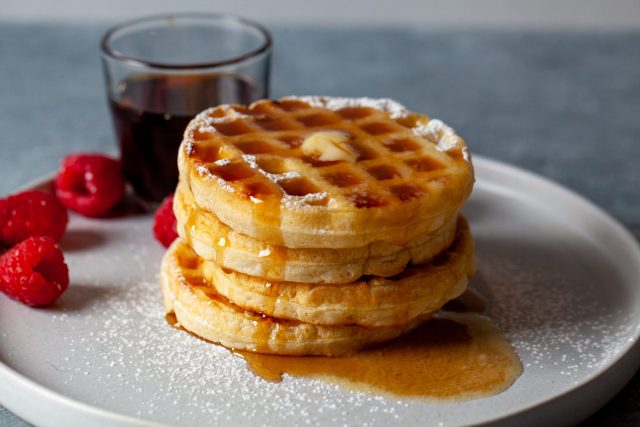Serious Eats / Will Dickey
There are few breads that don’t benefit from being set on some sort of heat-conducting baking surface. In the oven, breads rise (or “spring”, as bakers like to call it) when heat penetrates into the core of the dough, causing two things to happen. First, the yeast has one last blast of fermentation before meeting its ultimate demise, going out in a frantic blaze of carbon dioxide production. And second, some of the water in the dough turns into steam. Both of these processes cause the bubbles—or, more accurately, “alveoli”—in the dough to inflate like miniature balloons, opening up the interior crumb and expanding the overall dimensions of the loaf. But this process is a race against time, since that same heat causes the crust to firm up, locking down the shape of the loaf once and for all.
When baked directly on an oven rack (in or on a pan), heat penetrates into the loaf more or less evenly from all directions. But when you set the loaf on a heavy, preheated baking surface (in a pan or freeform), energy flows much more quickly into the core of the loaf, bumping up the rate of oven spring significantly and evening out the race between crust and crumb formation. (The only breads that don’t need a baking surface for success are enriched ones containing lots of fat—brioche or soft sandwich loaves, for example—since the fat keeps the crust soft, allowing the crumb to expand far longer than it otherwise can. But many bakers use baking surfaces for these too, since you can still get better oven spring on one.)
Flatbreads like pizza and foccacia are breads too, of course. And they also benefit from the use of a baking surface, but in this case the goal is the inverse of that for loaf breads: to cook the bottom crust as quickly as possible, so as not to overcook the interior crumb and/or the exposed crust and toppings. Oven spring is important in flatbreads, but it tends to happen automatically. More important is achieving a crisp bottom crust. Moisture in a pizza gets trapped between the bottom crust and a pan, slowing down crisping and browning. Setting the bread on a preheated surface (again, in a pan or freeform) helps that moisture boil away so that the crust can cook as quickly as possible.
There are two main kinds of baking surfaces: stones or steels. Baking “stones” are a misnomer; most are formed from either terracotta clay or a mineral compound known as cordierite, fired at high temperatures like pottery to make them solid and heat-resistant. While some people use cheap terracotta tiles for baking with success, the best stones are those made from cordierite, since it is more heat stable and resistant to thermal shock—cracking or shattering when subjected to rapid heating or cooling—than terracotta (the shelves in most pottery kilns are made of cordierite for this reason). A few stones are made from another mineral called mullite, which is similar to cordierite, if purportedly more conductive (more on conductivity below). Baking steels are just that: thick sheets of raw steel cut to size, polished to remove sharp edges, and seasoned and sealed with oil to prevent rusting.
So which should the new baker buy: a stone or a steel? The answer is (as is often the case): It depends. Both stones and steels work great, so you cannot go wrong with either, though there are pros and cons to each, and which is best for you depends upon both your particular needs and budget.
Size Considerations
Serious Eats / Will Dickey
Both baking stones and steels come in a variety of shapes, sizes, and thicknesses. While the shape and exterior dimensions of the slabs do matter, most people are best served by one that is a) rectangular or square, and b) slightly smaller than the average oven rack. Rectangles and squares are better than round ones, because both give you a bigger, more forgiving target for the bread or pizza. (If you miss the mark with a round one, there’s a risk of it hanging off of the side, which is less than ideal, especially when there is molten cheese in the mix.) Plus, they provide enough room to bake long breads that would overhang a round surface, like baguettes.
And you generally want something generously-sized, while still leaving plenty of room for proper air circulation around the edges of the surface, to let the bread cook evenly both inside and out. For the average oven, this means something that is 15 to 16 inches in one direction and at least 12 inches in the other.
As far as thickness goes, that depends upon the material in question. All else being equal, the thicker the surface, the heavier the item. And the heavier the item, the more brawn it requires to move from storage to the oven and back again. Stones range from 1/2-inch to a little more than 1-inch thick, and from about eight pounds up to 13 pounds. The thinnest baking steels are 1/4-inch thick and weigh upwards of 16 pounds, already double the weight of the average stone. And only slightly thicker 3/8-inch steels can weigh as much as 27 pounds!
Price Matters, Too
All else being equal, baking stones are lighter on the wallet than steels, too. The price for a good 15-inch by 12-inch-ish stone is between $32 and $80, while the price of most 1/4-inch steels of similar dimensions start around $80. And 3/8-inch thick ones can cost $170.
Conductivity
Serious Eats / Will Dickey
Price and weight aside, the biggest difference between stones and steels is in their relative conductivity. Conductive materials absorb and release energy (heat, in this case) more quickly than less-conductive ones, and steel is far more conductive than cordierite or mullite. This allows steels to pump heat into the bread far more quickly than stones do. It also means that steels absorb heat more quickly than stones, cutting down on preheating time; stones usually need a good hour of preheating before use, while steels are ready to go in as little as 30 minutes.
With pizza and other flatbreads, this is unequivocally a good thing, since the faster these breads cook, the better. But with loaf breads, this can be a recipe for disaster, since the bottom of the loaf can burn before the rest of the crust or the interior has cooked sufficiently. In my experience, steel is often just too conductive for loaf breads; while there are plenty of people who use baking steels for loaf breads successfully, it is something I generally do not recommend. You don’t have to take my word for it, though: Baking Steel, the original baking steel company, sells special heatproof silicone rings meant to shield loaf breads from the intensity of the steel, to help mitigate this effect.
Thermal Mass
Serious Eats / Will Dickey
What baking stones lack in conductivity they make up for in thermal mass, or the ability of a material to absorb and store energy and release it gradually. So while a steel acts like its own heating element once hot, pushing heat into the bread or flatbread in a flash, a stone is more like a battery, providing a long-lasting reserve of heat. This is especially helpful when baking multiple batches of bread or pizza in succession, since the stone won’t need to be “recharged” between batches.
Cleanup and Care
Stones and steels are pretty low maintenance tools, no matter what they’re made of. If cheese or something like it gets onto the surface, just scrape or scrub off whatever remains once it cools down. Don’t use soap, since that can get absorbed by a stone and might remove the seasoning from the steel; it’s not necessary anyway, since any embedded residue will burn off the next time you heat it up. Other than cleaning, stones don’t need any other maintenance. Baking steels need occasional reseasoning, which is as simple as coating them lightly with vegetable oil before heating once every few months or so (or if you notice rust beginning to form).
The Bottom Line: Should You Buying a Baking Stone or a Baking Steel?
Serious Eats / Will Dickey
My usual advice to someone who doesn’t yet own a baking surface is this: If you don’t have a lot of money to spend and/or don’t want to have to heft nearly 20 pounds of steel around, just get a good baking stone. They work wonderfully for both pizza and loaf breads, and while they are a little slower than steels for flatbreads, they still do a way better job than no surface at all. And if you are mostly interested in baking loaf breads, a stone is by far the superior choice, for its more tempered conductivity. In my experience, stones don’t need to be terribly thick or heavy to do a good job, so look for a square or rectangular one that is 15 by at least 12 inches in outside dimensions and half an inch or so thick, like this one.
On the other hand, if you are a pizza or flatbread person, can handle both the extra dollars and pounds, and don’t bake loaf breads often, get a steel; its superior conductivity will definitely take your pies to the next level. And you can always stick a sheet pan or two under your occasional loaf bread bakes to keep them from burning. I recommend going with a 1/4-inch thick steel, to keep the already heavy and costly device as light and affordable as possible. The o.g. Baking Steel and NerdChef steels are excellent choices, but just-as-excellent but more affordable steels can also be found on places like Etsy. (Steel is steel is steel—as long as it is sealed well to avoid rust, they all work identically).
FAQs
Is a baking stone or a baking steel more durable?
Stones can crack, though the best ones shouldn’t; steels are pretty much indestructible, except when they lose their seasoning and start to rust.
Do you need to use parchment paper on a baking stone?
You do not need to use parchment on a stone or a steel, but sometimes it is useful to, such as if the bread in question is very wet and maybe prone to sticking, if it makes transferring the bread(s) to the surface easier, or if the bread or flatbread contains ingredients or toppings that might melt and run onto the surface. In the case of pizzas and many other flatbreads, a sheet of parchment can inhibit good browning and crisping, because it traps steam and insulates the bread from the heat.
Do baking stones need to be greased?
No! Don’t add oil or any other fat to a stone, or to a steel, other than the occasional light coating of seasoning oil. It’ll just smoke up your kitchen something awful.


